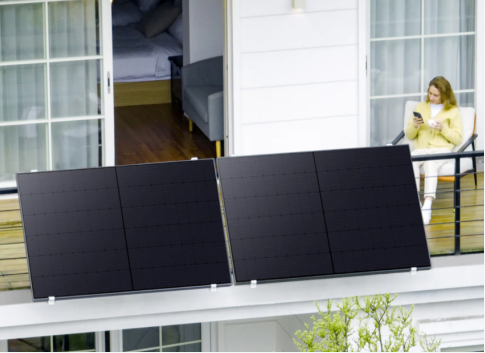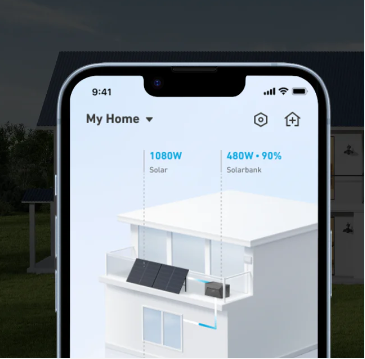Monitoring your solar power system is crucial for ensuring optimal performance and maximizing the benefits of renewable energy. By keeping track of energy production and consumption, you can identify potential issues early, optimize usage, and gain insights into your energy savings. In this article, we’ll walk you through various methods to monitor your solar power system at home, helping you stay informed and in control.

How to Monitor Your Solar Power
Effective monitoring of your solar power can provide valuable data on energy production, efficiency, and overall system health. Let’s delve into the different ways you can monitor your solar power system at home.
Inverter Monitoring
The inverter is a critical component of your solar power system, converting the direct current (DC) generated by your panels into alternating current (AC) for home use. Many modern inverters come with built-in monitoring capabilities. Some inverters like those in Anker’s balcony power plants 800 watt systems feature display panels that show real-time data on energy production, system status, and potential issues. This information can be easily accessed directly from the inverter unit installed in your home.
Online Monitoring Portals
Many solar power systems come with access to online monitoring portals provided by the manufacturer or installer. These portals offer comprehensive data and analytics. Web-based dashboards provide a detailed overview of your solar system’s performance, including daily, monthly, and yearly energy production. They also display information on energy consumption and savings, helping you understand your system’s impact on your utility bills. Online portals can send alerts and notifications via email or text message if the system detects issues such as a drop in energy production or equipment failure. This proactive approach ensures you can address problems promptly to maintain optimal performance.
Mobile Apps
Mobile apps provide convenient, on-the-go access to your solar power system’s data. These apps are typically offered by inverter manufacturers or third-party monitoring services. Mobile apps offer real-time monitoring, allowing you to check your system’s performance anytime, anywhere. You can view energy production, consumption, and system health directly from your smartphone or tablet. Some apps provide detailed insights into your energy usage patterns, helping you identify areas where you can reduce consumption and increase efficiency. They may also offer tips and recommendations for optimizing your solar energy use.

Smart Home Integration
Integrating your solar power system with smart home technology can enhance monitoring capabilities and overall energy management. Smart meters track electricity consumption in real-time and provide data to both you and your utility company. When integrated with your solar power system, smart meters can help you understand how much energy you are producing versus consuming from the grid. Home automation systems like Google Home or Amazon Alexa can be integrated with your solar monitoring tools. This allows you to use voice commands to check your solar system’s status, receive energy reports, and control smart appliances based on energy production levels.
Battery Storage Monitoring
If your solar power system includes battery storage, monitoring the battery’s performance is essential for optimizing energy usage and maintaining system health. Battery management systems (BMS) monitor the state of charge, health, and performance of your batteries. They provide critical data to ensure your batteries are operating efficiently and safely. Hybrid inverters that manage both solar generation and battery storage often come with integrated monitoring features. These systems offer a unified view of solar production, energy storage, and consumption, allowing you to maximize the use of stored energy.
Conclusion
Effective monitoring of your solar power system is key to maximizing its performance and benefits. Whatever methods you use to monitor your solar power system at home, staying informed about your system’s status helps you optimize energy production and consumption. By leveraging these monitoring tools, you can ensure your solar power system operates efficiently, providing you with reliable, renewable energy and significant savings on your utility bills.
